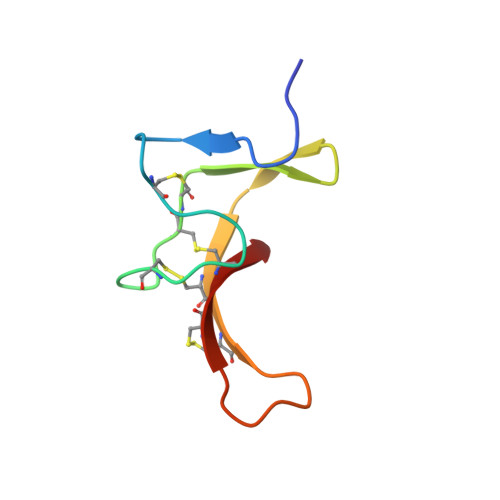A distinct sodium channel voltage-sensor locus determines insect selectivity of the spider toxin Dc1a.
Bende, N.S., Dziemborowicz, S., Mobli, M., Herzig, V., Gilchrist, J., Wagner, J., Nicholson, G.M., King, G.F., Bosmans, F.(2014) Nat Commun 5: 4350-4350
- PubMed: 25014760
- DOI: https://doi.org/10.1038/ncomms5350
- Primary Citation of Related Structures:
2MI5 - PubMed Abstract:
β-Diguetoxin-Dc1a (Dc1a) is a toxin from the desert bush spider Diguetia canities that incapacitates insects at concentrations that are non-toxic to mammals. Dc1a promotes opening of German cockroach voltage-gated sodium (Nav) channels (BgNav1), whereas human Nav channels are insensitive. Here, by transplanting commonly targeted S3b-S4 paddle motifs within BgNav1 voltage sensors into Kv2.1, we find that Dc1a interacts with the domain II voltage sensor. In contrast, Dc1a has little effect on sodium currents mediated by PaNav1 channels from the American cockroach even though their domain II paddle motifs are identical. When exploring regions responsible for PaNav1 resistance to Dc1a, we identified two residues within the BgNav1 domain II S1-S2 loop that when mutated to their PaNav1 counterparts drastically reduce toxin susceptibility. Overall, our results reveal a distinct region within insect Nav channels that helps determine Dc1a sensitivity, a concept that will be valuable for the design of insect-selective insecticides.
Organizational Affiliation:
Institute for Molecular Bioscience, The University of Queensland, St Lucia, Queensland QLD 4072, Australia.














